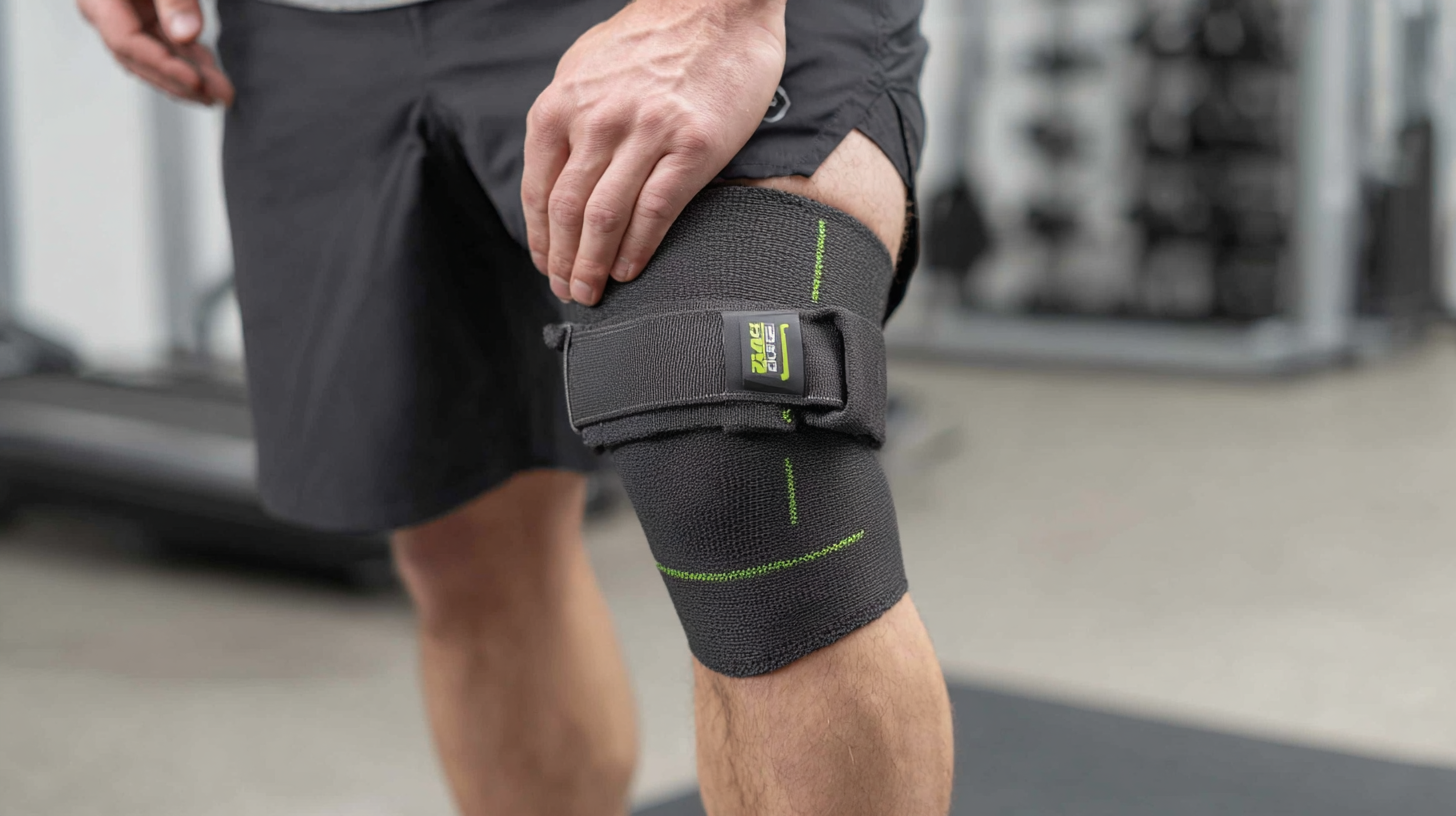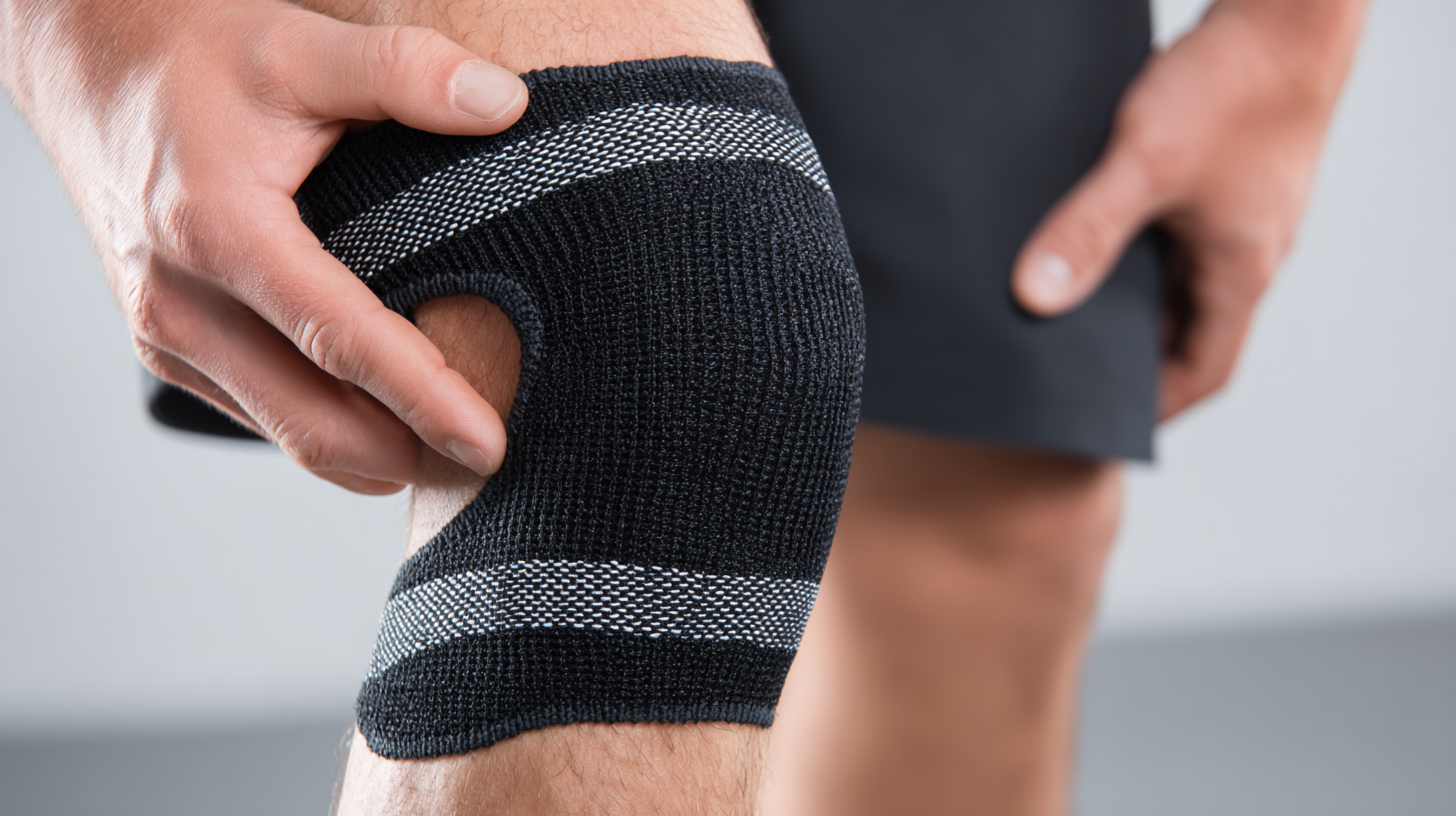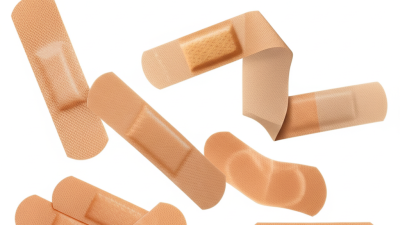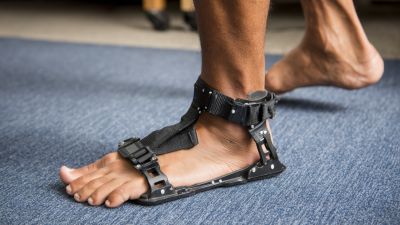The Essential Guide to Choosing the Right Knee Splint for Your Recovery Needs
Choosing the right knee splint is crucial for effective recovery from knee injuries and surgeries. According to a report by the American Academy of Orthopaedic Surgeons, approximately 18 million knee injuries occur annually in the United States alone, leading to a significant demand for supportive devices like knee splints. A well-fitted knee splint not only aids in immobilization but also provides stability and pain relief during the healing process.
Different types of knee splints serve various purposes—ranging from post-operative immobilization to support for chronic conditions like arthritis. With the market offering a myriad of designs, including hinged, elastic, and custom-fitted splints, understanding the specific needs based on injury type and recovery goals is essential for optimal healing.
This guide aims to navigate through these choices, empowering patients to select the most suitable knee splint to meet their individual recovery requirements.
Understanding Different Types of Knee Splints and Their Applications in Recovery
 When it comes to recovering from knee injuries or surgeries, choosing the right knee splint is crucial for effective healing and rehabilitation. There are several types of knee splints, each designed to serve specific functions. For instance, a hinged knee brace is commonly used following ligament surgery, as it allows for controlled mobility while stabilizing the joint. According to the American Academy of Orthopaedic Surgeons, proper immobilization can significantly reduce recovery time and enhance rehabilitation outcomes, making the selection of the correct splint pivotal for optimal recovery.
When it comes to recovering from knee injuries or surgeries, choosing the right knee splint is crucial for effective healing and rehabilitation. There are several types of knee splints, each designed to serve specific functions. For instance, a hinged knee brace is commonly used following ligament surgery, as it allows for controlled mobility while stabilizing the joint. According to the American Academy of Orthopaedic Surgeons, proper immobilization can significantly reduce recovery time and enhance rehabilitation outcomes, making the selection of the correct splint pivotal for optimal recovery.
Additionally, a patellar stabilizing brace focuses on maintaining proper alignment of the kneecap, which can be beneficial for athletes dealing with patellar instability. Research published in the Journal of Orthopaedic Research suggests that about 25% of sports-related injuries involve knee instability, underscoring the significance of supportive devices. Understanding the varying applications of these splints can directly influence recovery efficacy, as the right type of splint not only provides necessary support but also promotes healing through appropriate joint alignment. Whether it’s for post-operative recovery or managing chronic conditions, selecting the right knee splint allows patients to regain mobility faster and more effectively.
Key Features to Consider When Selecting a Knee Splint for Optimal Support
When selecting a knee splint, it is crucial to consider several key features to ensure optimal support for your recovery needs. One of the primary aspects to evaluate is the level of immobilization. According to a report by the American Academy of Orthopaedic Surgeons, splints that provide varying degrees of stability are beneficial for different conditions, such as ligament injuries or post-surgical recovery. Choosing a splint designed for your specific injury type can significantly enhance the healing process.
Another important feature is adjustability. Many contemporary knee splints offer customizable fit options, allowing users to modify pressure and range of motion. A study published in the Journal of Orthopaedic Research indicates that adjustable splints can reduce recovery time and improve patient satisfaction. When trying on a splint, ensure it can be securely fastened without restricting circulation.
Tips: Always consult with a healthcare provider before selecting a splint to guarantee it suits your particular recovery needs. Additionally, consider materials that provide breathability and comfort, as prolonged wear can lead to skin irritation. Finally, make sure the splint is lightweight to facilitate mobility while still providing the necessary support.
Comparative Analysis of Rigid vs. Soft Knee Splints: Which is Right for You?
When it comes to knee recovery, the choice between rigid and soft knee splints is critical to achieving optimal outcomes. Rigid knee splints provide maximum stability, making them an excellent option for individuals recovering from severe injuries, surgical procedures, or conditions such as ligament tears. According to a study published in the Journal of Orthopaedic Research, patients using rigid splints reported a 40% faster recovery time compared to those who utilized softer support options. This can largely be attributed to the splint’s ability to immobilize the joint effectively, reducing unwanted movement during the healing phase.
On the other hand, soft knee splints offer more flexibility and comfort, making them suitable for situations where mobility is still desired. Research from the American Academy of Orthopaedic Surgeons indicates that soft splints are particularly beneficial for those managing mild to moderate injuries, as they provide compression and support without completely restricting movement. This can facilitate gradual rehabilitation and prevent muscle atrophy, which can occur when joints are excessively immobilized. Thus, the choice between rigid and soft knee splints should be tailored to individual recovery needs, activity levels, and specific injury types for the best possible outcomes.
The Essential Guide to Choosing the Right Knee Splint for Your Recovery Needs
| Feature |
Rigid Knee Splint |
Soft Knee Splint |
| Stability |
High |
Moderate |
| Comfort |
Less Comfortable |
More Comfortable |
| Weight |
Heavier |
Lighter |
| Usage |
Post-surgery, severe injuries |
Mild injuries, support during activities |
| Flexibility |
Limited |
High |
| Cost |
Higher |
Lower |
The Role of Material Durability in Knee Splint Effectiveness and Longevity
When selecting a knee splint for recovery, the material used in its construction plays a crucial role in both effectiveness and longevity. According to a report by the Journal of Orthopedic Research, splints made from high-grade materials like Thermoplastic Polyurethane (TPU) and breathable fabrics not only offer greater support but also enhance patient comfort during long-term use. These materials are engineered to withstand wear while providing the necessary rigidity, ultimately leading to improved healing outcomes.
Tips: When choosing a knee splint, consider options with moisture-wicking properties to promote airflow, reducing the risk of skin irritation. Also, look for adjustable straps made from durable materials that can provide a customized fit, ensuring stability without compromising comfort.
Durability in knee splint materials directly impacts the splint's performance over time. A study published by the American Academy of Orthopedic Surgeons highlights that splints that retain their shape and structural integrity tend to foster better alignment and support throughout the recovery process. Opting for splints constructed with reinforced stitching and robust plastic can further contribute to the longevity and effectiveness of the device.
Tips: Regularly inspect your splint for signs of wear and tear, and replace it if you notice any significant degradation. This proactive approach will ensure you receive consistent support as you progress through your rehabilitation.
Current Trends and Innovations in Knee Splint Design for Enhanced Recovery Outcomes
Recent advancements in knee splint design are transforming recovery experiences for patients with various knee injuries or conditions. Manufacturers are embracing innovative materials that not only enhance comfort but also provide optimal support and stability. Lightweight braces made from advanced polymers and breathable fabrics allow for greater mobility and less skin irritation. This move towards ergonomic design ensures that users can remain active while adhering to their rehabilitation protocols.

Moreover, technology integration is reshaping the functionality of knee splints. Smart splints equipped with sensors can monitor joint angles and movement patterns, offering data to both patients and healthcare providers. This feedback facilitates personalized recovery plans and helps track progress more effectively. Innovations such as adjustable tension systems and customizable fit features further enhance the adaptability of these splints, catering to individual needs and promoting better recovery outcomes. As these trends continue to develop, patients can expect a more tailored and supportive approach to knee rehabilitation.

Home
About Us
Products
Videos
Download
News
FAQ
Blog
Contact Us

 When it comes to recovering from knee injuries or surgeries, choosing the right knee splint is crucial for effective healing and rehabilitation. There are several types of knee splints, each designed to serve specific functions. For instance, a hinged knee brace is commonly used following ligament surgery, as it allows for controlled mobility while stabilizing the joint. According to the American Academy of Orthopaedic Surgeons, proper immobilization can significantly reduce recovery time and enhance rehabilitation outcomes, making the selection of the correct splint pivotal for optimal recovery.
When it comes to recovering from knee injuries or surgeries, choosing the right knee splint is crucial for effective healing and rehabilitation. There are several types of knee splints, each designed to serve specific functions. For instance, a hinged knee brace is commonly used following ligament surgery, as it allows for controlled mobility while stabilizing the joint. According to the American Academy of Orthopaedic Surgeons, proper immobilization can significantly reduce recovery time and enhance rehabilitation outcomes, making the selection of the correct splint pivotal for optimal recovery.





